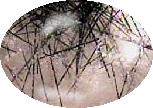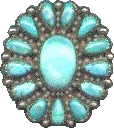
 |
| You might also like: | Rocks and Minerals Dictionary: A | Label Subduction (Plate Convergence) Printout | Soil Layers | Today's featured page: Hokusai: Wave Coloring Page |
| Our subscribers' grade-level estimate for this page: 4th - 6th |
 |
Rock and Mineral Dictionary |
 |
| A | B | C | D | E | F | G | H | I | J | K | L | M | N | O | P | Q | R | S | T | U | V | W | X | Y | Z |
tabasheer opal Tabasheer (also spelled tabashir) or pearl opal is an organic stone that forms in damaged joints (nodes) of bamboo plants. This hydrated form of silica appears as a rounded mass of opal, and looks like seed pearls. |
talc Talc is a very soft mineral (magnesium silicate). Talc has a hardness of 1. |
talus Talus is a pile of rock debris at the bottom of a cliff or slope. |
tanvorite Tanvorite is a trademarked name for a manmade gemstone. This synthetic stone is a deep blue-purple stone that resembles tanzanite. |
 tanzanite Tanzanite (strontium-rich Calcium-aluminum silicate) is a valuable, transparent, blue-violet type of zoisite resembling sapphire. Tanzanite has a hardness of 6 and a specific gravity of 3.35. It is often heat-treated in order to produce a deeper blue-violet color. This mineral was discovered in 1967 by Manuel d'Souza (an Indian tailor) southwest of Mt. Kilimanjaro in Tanzania, Africa. |
tectonic activity Tectonic activity is the shifting of a planet's surface because of changes deep inside the body. Earthquakes, fissures, rifts, and volcanoes are some results of tectonic activity. |
temper To temper is to strengthen or harden metal (or glass) by heating it or by heating then cooling it. Harder tempers are stronger, more spring-like, and brittler (when they are bent, they may break). Softer tempers are weaker but bend easily. |
Tertiary period The Tertiary period lasted from 65 to 1.8 million years ago. It followed the Cretaceous period (the end of the Mesozoic Era) and the K-T extinction. Many mammals developed then, including primitive whales, rodents, pigs, cats, rhinos, etc. |
| tephra Tephra is volcanic material that is airborne, like lava bombs, lapilli, and ash. |
Tethys sea The Tethys sea was a shallow sea that existed during the early Mesozoic Era. It was the body of water that separated the landmass of Laurasia in the north from Gondwanaland in the south. |
thermoluminescent Thermoluminescent minerals emit bright light when heated. For example, chlorophane is a varity of fluorite that emits bright green light when heated. |
tide A tide is a periodic rise and fall of large bodies of water. Tides are caused by the gravitational interaction between the Earth and the Moon. The gravitational attraction of the moon causes the oceans to bulge out in the direction of the moon. Another bulge occurs on the opposite side, since the Earth is also being pulled toward the moon (and away from the water on the far side). Since the earth is rotating while this is happening, two tides occur each day. Isaac Newton was the first person to explain tides scientifically. |
 tiger's eye Tiger's eye is a yellowish-brown to reddish-brown gemstone that has a silky luster. This gemstone has bands of yellow and brown; when viewed from the opposite direction, the colors are reversed. Tiger's eye is usually highly polished and set as a cabochon (or cut as a bead) to display the stone's chatoyancy (light reflected in thin bands within the stone). Tiger's eye is a type of chatoyant quartz with fibrous inclusions (especially crocidolite). This stone is sometimes heat-treated. Tiger's eye has a hardness of 7.0. Most tiger's eye is mined in South Africa, but it is also found in Australia, Brazil, Burma (Myanmar), India, Namibia, Sri Lanka (Ceylon), and the USA. Green-grey varieties of this stones are called cat's-eye quartz. Blue-grey to bluish varieties are called hawk's-eye. Deep brown varieties of this stone are called bull's-eye or ox-eye. |
topaz Topaz (aluminum silicate fluoride hydroxide) is a very hard gemstone that ranges in color from brown, to yellow to blue to pink. Pink topaz is usually created by irradiating common yellow topaz. Other colors are often created by heat-treating and/or irradiating topaz. Imperial topaz is golden orange-yellow topaz; it is the most valuable topaz Topaz has a hardness of 8 and a specific gravity of 3.5-3.6. Topaz may have been named for the legendary Topasos Island in the Red Sea. |
tourmaline Tourmaline is a dichroic gemstone that comes in many, many different colors; it also appears to have different colors depending on the angle at which it is seen. Tourmaline has the greatest color range of any gemstone - the lighter colors are more valuable than the darker colors. It ranges in color from pink to green to red (rubellite) to purple to blue-green (indicolite) to colorless (achroite) to black. Watermelon tourmaline is both pink and green. Tourmaline occurs as an elongate three-sided prism and is mined in Brazil, The Ural mountains in Russia, Namibia, Sri Lanka, and California. Tourmaline was only discovered in the 1700's. Tourmaline has a hardness of 7-7.5 and a specific gravity of 3.02-3.25. It is doubly-refractive. |
 tourmalinated quartz Tourmalinated quartz is a variety of transparent quartz that has needle-like inclusions of black to dark green tourmaline crystals. This beautiful stone is found worldwide. Tourmalinated quartz has a hardness of 7.0. This stone is not enhanced. |
translucent Translucent materials allow light to pass through them, but the light is diffused (scattered). Some translucent stones include moonstones, opals, and carnelian. |
transparent Transparent materials allow light to pass through them without diffusing (scattering) the light. Some translucent stones include diamond, zircon, emerald, rock crystal, and ruby. |
Transvaal jade Transvaal jade is not jade; it is a green to gray massive variety of grossular garnet, calcium-aluminum silicate. It is found about 40 miles west of Pretoria, South Africa. Transvaal jade can be distinguished from jadeite or nephrite by its high refractive index. Grossular garnet has a refractive index of 1.72 to 1.73, a hardness of 6-7.5 and a specific gravity of 3.5 - 3.67. |
Trapiche emeralds Trapiche emeralds are rare, valuable emeralds that have a black, six-rayed star within them, caused by black carbon impurities (the star is not an asterism). These stones are usually cabochon cut to display the beautiful spoke-like star. These stones are only mined in Colombia, South America. Trapiche emeralds are sometimes called star emeralds (but the term star emerald can also refer to emeralds with an asterism). Trapiche is a Spanish word for the spoked wheel that is used to grind sugar cane. |
trap rock Trap rock is a type of igneous rock. This solidified lava often contains pockets of crystals. |
Triassic period Dinosaurs and mammals evolved during the Triassic period, 245 - 208 million years ago. |
tropics The tropics are a 3,000 mile (4800 km) wide band around the equator, between the Tropic of Cancer (23.5° N latitude) and the Tropic of Capricorn (23.5° S latitude). |
troposphere The troposphere is the lowest region in the Earth's (or any planet's) atmosphere. On the Earth, it goes from ground (or water) level up to about 11 miles (17 kilometers) high. The weather and clouds occur in the troposphere. In the troposphere, the temperature generally decreases as altitude increases. |
troy weight Precious metals (like gold, platinum, and silver) are measured in troy weight, which has units of pennyweights, ounces, and pounds. Troy ounces and pounds are different from everyday US measures. |
tsavorite Tsavorite is a rare, deep green variety of grossular garnet, a type of garnet, calcium-aluminum silicate. The emerald green color comes from vanadium and chromium. Tsavorite is similar to emerald, but is rarer and more durable; it also has a higher refractive index, 1.74. Tsavorite stones over two carats are considered large and are very rare. Tsavorite has a hardness of 7.5 and a specific gravity of 3.6. Tsavorite is found in east Africa; it was named by Harry B. Platt of Tiffany & Co. for the Tsavo National Park in Kenya, where this gemstone was originally found in 1967. Tsavorite is not enhanced. |
tsunami A tsunami is a rare, giant wave that is caused by an underwater earthquake or other large-scale, underwater disturbance. |
tuff Tuff is pyroclastic rock. |
tumbled Tumbled stones were finished in a tumbler, a mechanical device that smooths and rounds the surfaces of stones. Tumbled stones look very much like stones that have been in a fast-flowing river or stream for a long time. |
tumbler A tumbler is a rotating cylinder (powered by a motor) that smooths and rounds the surfaces of stones, increasing their luster. As the stones tumble around the cylinder, they bump against each other and smooth each other's surfaces. |
 turquoise Turquoise is a non-translucent, porous semi-precious stone (it is a hydrated phosphate of copper and aluminum) that is usually cut as a cabochon. Turquoise was believed to have been first found in Turkey, hence its name (Turquie is the French word for Turkey). The oldest turquoise mines are located in Alimersai Mountain in Persia (Iran) and in the Sinai Peninsula in Egypt. Turquoise is found in desert regions worldwide. The finest turquoise is Persian (Iranian) turquoise; it is robin's egg blue and has no matrix (streaks of the mother stone from which they were found). North American turquoise is greener and has a matrix streaks. Over the years, oil from your skin is absorbed by the stone and it will change color slightly. Turquoise has a hardness of 6 and a specific gravity of 2.60-2.85. Turquoise is the national gemstone of Iran. |
tuya A tuya is a volcano that erupts under a glacier. |
twinning Twinning is a common error in crystalization in which two crystals grow out of one another or next to one another, and their crystal lattice is oriented differently from one another (some twins are like a mirror image of each other). If the crystals have grown into one another, they are called penetrant twins (forming a cross-shape like Staurolite, a star-shape like Muscovite, and other unusual shapes). If the crystals are mirror images that grow next to one another, they are called contact twins (they are often likened to Siamese twins). Twinning can drastically change the outward symmetry of the mineral specimen, by either increasing or decreasing the symmetry (like with spinel). For example, twinning can make an orthorhombic crystal appear to be hexagonal (as in Aragonite). |
 |
Rock and Mineral Dictionary |
 |
| A | B | C | D | E | F | G | H | I | J | K | L | M | N | O | P | Q | R | S | T | U | V | W | X | Y | Z |
Enchanted Learning®
Over 35,000 Web Pages
Sample Pages for Prospective Subscribers, or click below
|
Overview of Site What's New Enchanted Learning Home Monthly Activity Calendar Books to Print Site Index K-3 Crafts K-3 Themes Little Explorers Picture dictionary PreK/K Activities Rebus Rhymes Stories Writing Cloze Activities Essay Topics Newspaper Writing Activities Parts of Speech Fiction The Test of Time
|
Biology Animal Printouts Biology Label Printouts Biomes Birds Butterflies Dinosaurs Food Chain Human Anatomy Mammals Plants Rainforests Sharks Whales Physical Sciences: K-12 Astronomy The Earth Geology Hurricanes Landforms Oceans Tsunami Volcano |
Languages Dutch French German Italian Japanese (Romaji) Portuguese Spanish Swedish Geography/History Explorers Flags Geography Inventors US History Other Topics Art and Artists Calendars College Finder Crafts Graphic Organizers Label Me! Printouts Math Music Word Wheels |
Click to read our Privacy Policy
| Search the Enchanted Learning website for: |